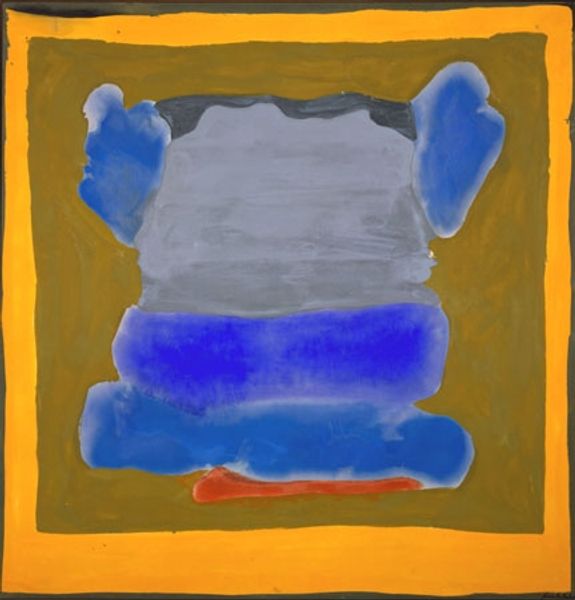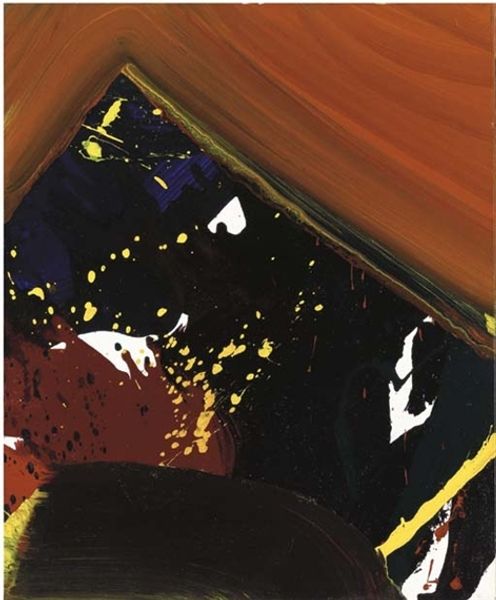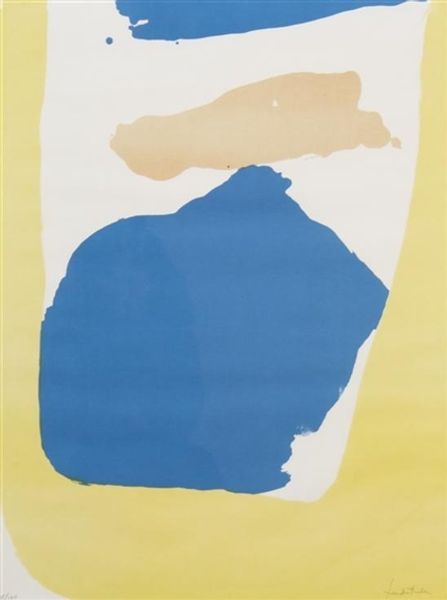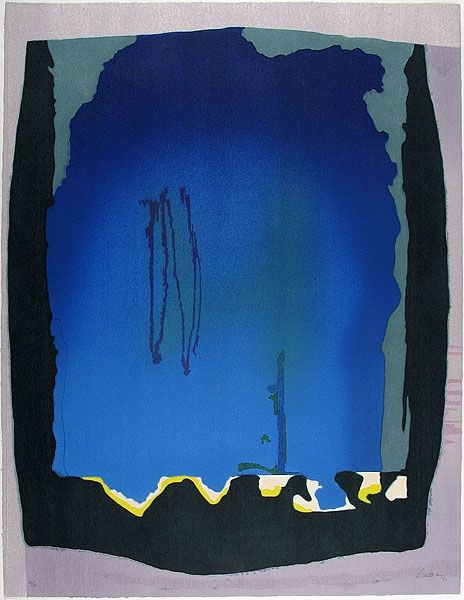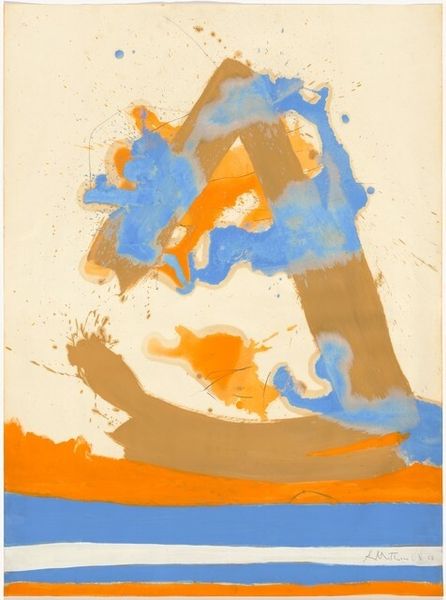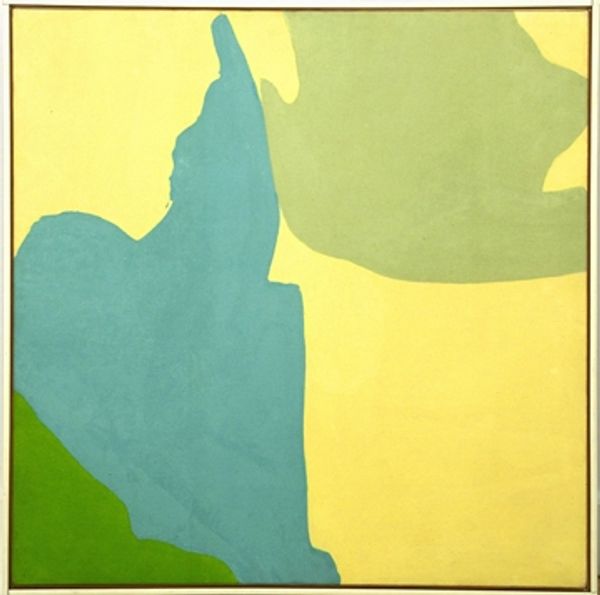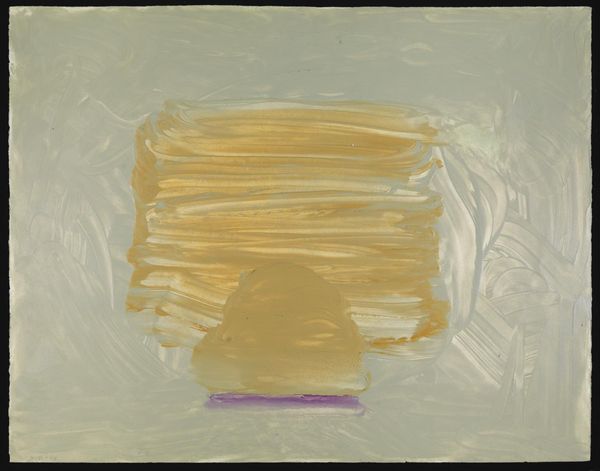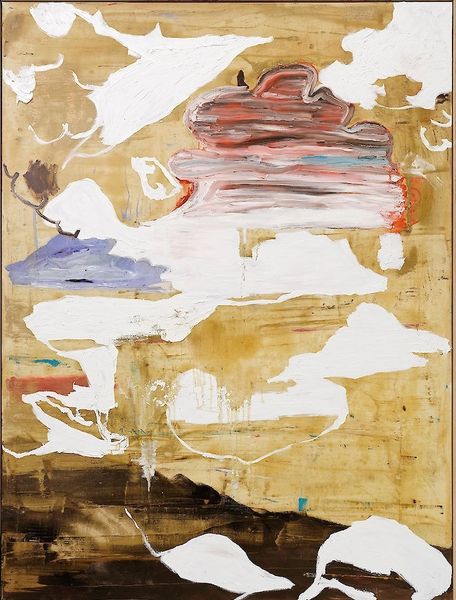
stain, painting, acrylic-paint
#
abstract-expressionism
#
stain
#
painting
#
landscape
#
pop art
#
colour-field-painting
#
acrylic-paint
#
oil painting
#
fluid art
#
geometric
#
abstraction
#
modernism
Dimensions: 266 x 235 cm
Copyright: Helen Frankenthaler,Fair Use
Curator: Welcome. Here, we have Helen Frankenthaler's "Interior Landscape" from 1964, now residing at SFMOMA. Editor: My immediate impression is of fluid shapes contained—almost trapped—within a bold geometric framework. The colors vibrate against each other, a visual tension between control and freedom. Curator: Frankenthaler, working within Color Field painting and Abstract Expressionism, frequently challenged conventional artistic boundaries. The "soak-stain" technique, here applied with acrylic, allowed her to merge color and canvas, creating a unified surface. Considering this was 1964, what does this abstraction tell us about landscape art at the time, its departure from tradition? Editor: It's a complete rejection of pictorial depth and illusionism. Look at the almost jarring juxtaposition of the bright blue, the vibrant yellow frame, and the deeper, brooding tones around it. The "landscape" exists solely as an experience of color and form. Curator: I think you make an excellent point, considering her role in second-wave feminism; do you think there is a potential reading of gender within the work? How could the fluidity that defines the stain technique stand in contrast to male contemporaries' artworks? Editor: It's a softer approach, yes. Less about aggression and more about permeability and allowing forms to emerge rather than forcefully imposing them. But at the same time, her work is not just quiet and retiring, you know? The confidence here cannot be overstated. Curator: Definitely, you could never accuse her of such a lack of confidence; perhaps her practice is a reflection of second-wave feminism's complex demands on gender roles? Editor: Her process dismantles traditional hierarchical composition. The canvas becomes an arena of pure experience—sensuous and immediate. There's also an undeniably intellectual aspect—a negotiation between chance and intentionality. Curator: A powerful synthesis, then, of historical and contemporary artistic impulses; thinking about her influence, and that dialogue between her painting and other media. Editor: A powerful and compelling dialogue for today's visitor.
Comments
No comments
Be the first to comment and join the conversation on the ultimate creative platform.
